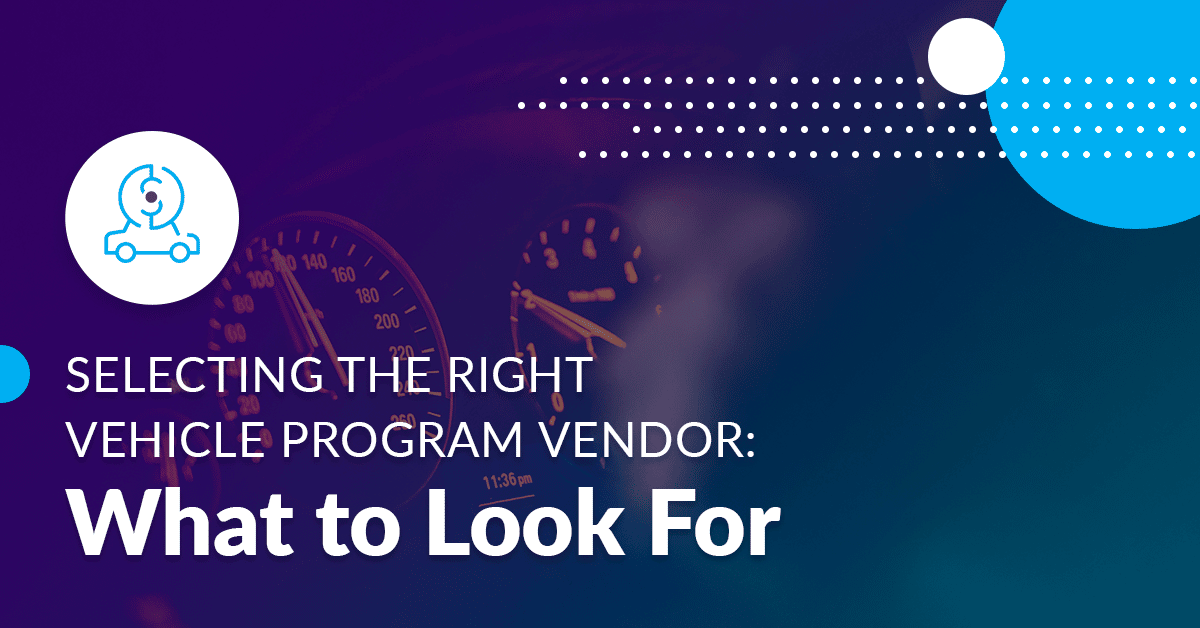Vehicle programs are a necessary piece of many businesses. From beverage distributors to business services, construction to pharmaceuticals, driving employees play an essential role. It’s also fairly common for companies to have more than one vehicle program. Multiple vehicle programs bring flexibility to companies that need some employees in a specific vehicle and others in the car of their choosing. While using more than one program—like a company mileage reimbursement with a car allowance— has it benefits, it does create more strain on the program administrators.
Multiple Vehicle Programs
For some companies, a vehicle program is cut and dry. The company selects a program and implements it across its mobile workforce. Other companies that have more specific needs turn to using more than one program. For example, a business may provide mileage reimbursement to its sales reps but offer a car allowance or company car to executives.
What that combination of programs might be varies from company to company. Bigger companies are more likely to have the need for multiple programs, while small or medium sized business typically use a single vehicle program. The selected program or programs are based on how many miles employees drive, what their job entails, and what the business needs are. There are many ways companies can implement fleet vehicles, car allowance and mileage reimbursement simultaneously. But with that opportunity comes a serious challenge.
Vehicle Program Administrative Load
Each program requires a certain amount of administrative work. For some, that amount is tiny. Others… not so much. Let’s take a look at the admin work involved with each program, beginning with the toughest.
Company-Provided Vehicles
This vehicle program has the biggest administrative lift because, whether leased or purchased, the company is responsible for their fleet vehicles. That means vehicle registration, general maintenance and emissions testing, all of those necessities fall to the company. It also means ensuring mobile workers capture mileage for personal-use chargebacks.
When an employee leaves the company, administrators still need to account for their fleet vehicle. Given that the hiring process generally takes around 90 days from job posting to onboarding, this can require anything from scheduling maintenance and detailing to idle asset storage.
Fixed and Variable Rate
This vehicle program sees that companies pay their mobile workers for both the fixed and variable costs of driving their personal vehicle for business. This program benefits mobile workers by reimbursing them for costs specific to their location. That might seem like a lot of work, but the right platform and vendor will calculate those rates and handle other pieces of the process. With a FAVR program, administrators can focus on the other tasks on their to do list.
Company Mileage Reimbursement
A company mileage reimbursement program, also referred to as a mileage reimbursement or cents-per-mile program, has companies paying employees for the business miles driven in their personal vehicles at a cents-per-mile rate. A lot of people don’t realize their company even has one because it often sits in T&E. Companies often use the annually-issued IRS mileage rate. Some opt for a more accurate rate, which requires calculation. This program still requires the collection and input of IRS-compliant mileage logs. Administrators may spend a lot of time chasing down employees to submit their mileage logs, checking the accuracy of the logs and approving them for reimbursement.
Car Allowance
Companies with a car allowance pay employees a monthly stipend for the business use of their personal vehicles. This program is perhaps the easiest in terms of administration. Once the company has decided on a monthly rate, it’s just a matter of scheduling deposits for each mobile worker.
Companies may also opt for an accountable allowance, a vehicle program that minimizes the tax waste of a car allowance. This will also require IRS compliant mileage logs and the resulting administration.
While a car allowance may be easier to implement than other programs, administrators still have to make sure the monthly allowance goes to driving employees, handle employee complaints when the allowance does not adjust with inflation or explain why the allowance doesn’t cover costs.
Using Multiple Vehicle Programs
Some vehicle programs may prove a better fit than others. For example, a company mileage reimbursement is generally best for businesses with low mileage drivers located in the same area. That doesn’t erase some companies’ needs for multiple programs. However, it does increase the administration required. For example, the administrator has to know which employee is a part of what vehicle program, what rate each employee receives and the rules each program must follow. Things can easily get mixed up and put strain on the person tasked with management. Companies may also have safety programs or other vehicle program initiatives that require administrative lift. What options does a company have when tackling this challenge?
Outsourcing Vehicle Programs to One Vendor
It’s typical for companies to look to experts for their vehicle programs. But this can prove challenging. One vendor may help with company mileage reimbursement, while another focuses on car allowances. Not every vendor is equipped to support multiple vehicle programs, let alone simultaneously. That means working with multiple vendors and platforms to manage the necessary vehicle programs. Fortunately, Motus can prevent that.
Motus is the market leader in reimbursement for a reason. With decades of experience across reimbursement types, areas and industries, our comprehensive platform supports multiple vehicle programs simultaneously. While the management of fleet vehicles is out of our hands, we can support the capture of personal mileage and fuel spend. Whether it’s automating mileage capture or calculating accurate rates, sharing insight into your mobile workforce or ensuring IRS-compliant mileage logs, Motus is here to help if you want to use one or more vehicle programs.
Interested in learning more about our platform and the problems it can help your company resolve? Connect with us for more details.








